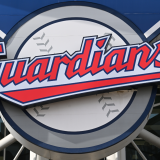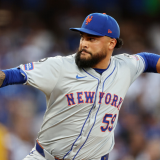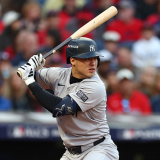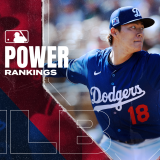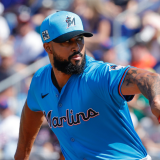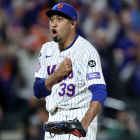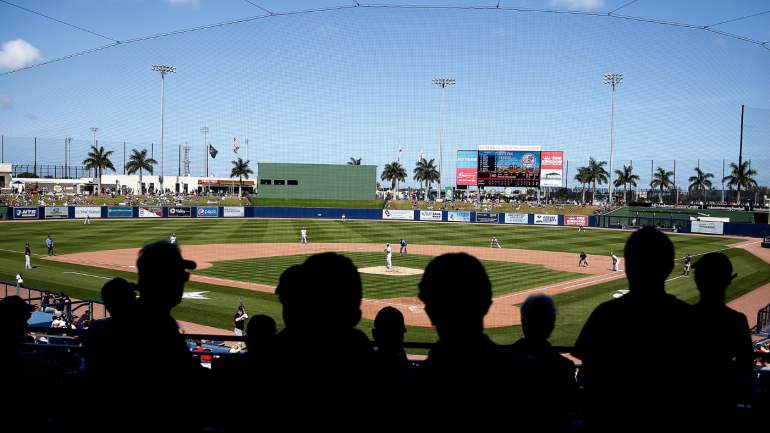
Last week, Major League Baseball's commissioner Rob Manfred informed teams to prepare for a full-length season that will start as scheduled -- or, a clean break from the altered 2020 campaign. In about a month's time, then, pitchers and catchers will be reporting to various sites in Arizona and Florida for the beginning of spring training.
As we learned in 2020, a lot can change between the reporting date and the season's scheduled launch date (Thursday, April 1). With the way MLB has operated this winter, a lot will have to change in order for the pieces to fall into place. Even this late in the offseason, teams are unsure what the upcoming season will look like, and what rules implemented last year will carry over or be discarded.
With that in mind, we wanted to hit on what we know and what we don't know about four important aspects of the 2021 season as it stands, a month before the year's first bullpen sessions.
1. Season length
As mentioned in the introduction, MLB is reportedly planning on a full, 162-game campaign. Those inside the industry who have spoken to CBS Sports have previously expressed skepticism about that plan, noting that a mid-May start date would allow for more time for vaccination efforts, thus creating safer conditions for the season.
The rub is that the league does not appear to have the power to unilaterally impose a later start date. Manfred's powers do expand if President-elect Joe Biden enacts a national state of emergency. Shy of that, the league would have to agree to an altered schedule with the union. It would seem to be in both sides' interest to postpone the start of the season, but they would have trouble reaching a consensus on the trouble of a sunflower.
2. Attendance
Fans were not permitted last regular season. That figures to change in 2021, with MLB following the same formula it deployed during the World Series: a limited, masked crowd that purchases tickets in socially distanced "pods."
Of course, those plans -- perhaps more than any other aspect of the year -- are likely to differ from month to month and market to market. Some states are more likely to allow a greater number of individuals in the stands than others. The effectiveness of the national vaccine effort could also allow for greater numbers as the season progresses.
It's worth noting that a report from USA Today's Bob Nightengale indicated that the league does not intend to require proof of vaccination or negative tests from fans at the onset of the spring. It's unclear if and/or when the league will revisit that stance.
3. Postseason size
Last fall, MLB allowed 16 teams into the postseason, or six more than usual. Manfred is on the record about wanting a larger playoff field -- just perhaps not that much larger. A deal between the league and the union will be required to increase the field from 10 to whatever number the league has in mind -- 14 would allow for the top seed in each league to receive a first-round bye -- but the league seems confident it'll get done.
Indeed, the league is so optimistic about the expanded postseason becoming a fixture that in December it was reportedly close to a broadcasting deal with ESPN that would see the network air all the first-round games. There's no reason to think the players will be combative about it -- the additional revenue could go toward player salaries, and more playoff spots means a greater opportunity to win a title -- so it seems fair to expect an agreement to be in place before the 2021 season starts.
4. Rules
Well, a regulation-length game will remain nine innings so we know that much. Otherwise, there's been little clarity as it pertains to the universal DH, the truncated doubleheaders, the runner-on-second-in-extras rule, the roster size, or any of the fixes implemented to make the 2020 partial season more entertaining and more palatable.
Manfred reportedly sent a memo to teams during the winter, alerting them to prepare as if there won't be a universal DH in 2021. That hasn't curbed the belief that the league could implement it again before Opening Day, albeit, perhaps, only if the union gives the league an expanded postseason in return. This is how MLB operates under Manfred: everything, even popular tweaks, turns into a battleground.
Manfred's approach is time-consuming, and it means that a lot of important decisions get made late in the process. It shouldn't surprise anyone, then, that pitchers and catchers might report before we know for certain what the season will look like.
![[object Object] Logo](https://sportshub.cbsistatic.com/i/2020/04/22/e9ceb731-8b3f-4c60-98fe-090ab66a2997/screen-shot-2020-04-22-at-11-04-56-am.png)


